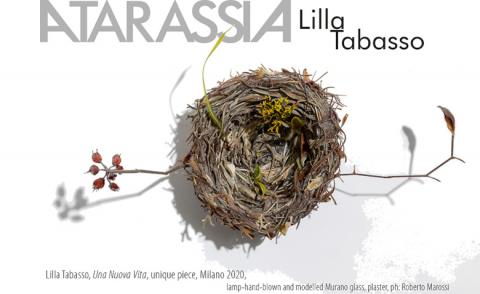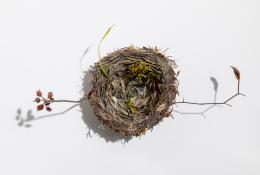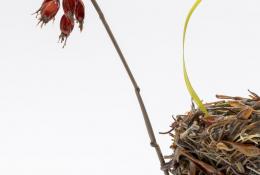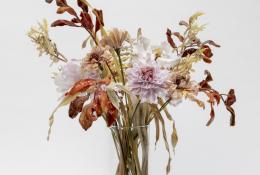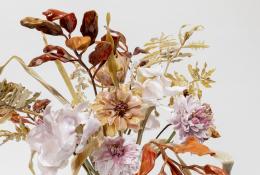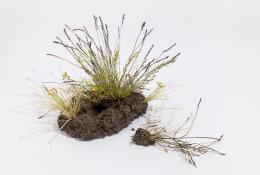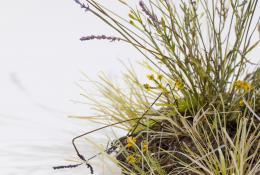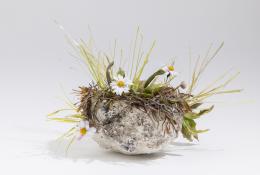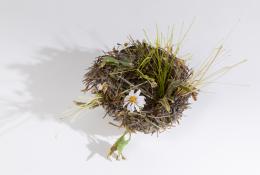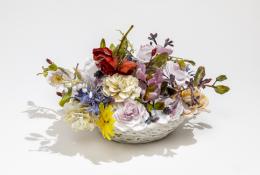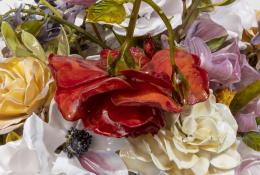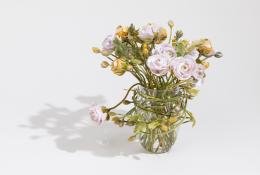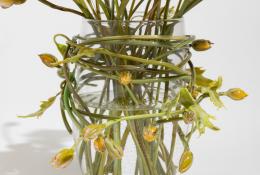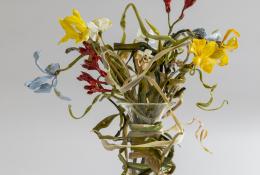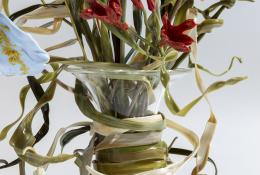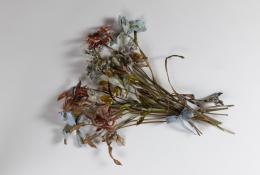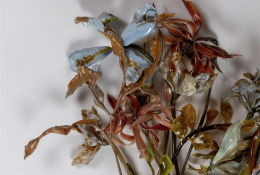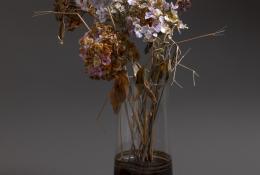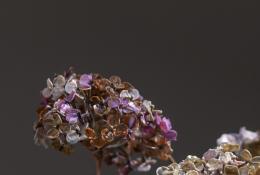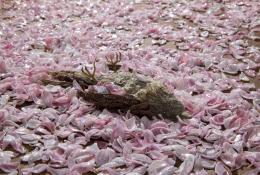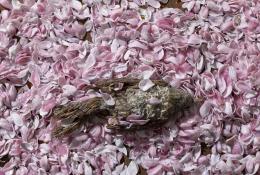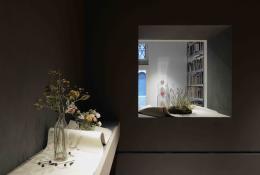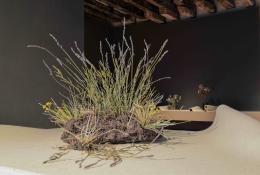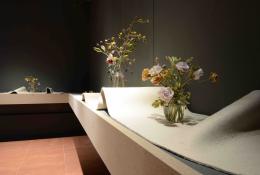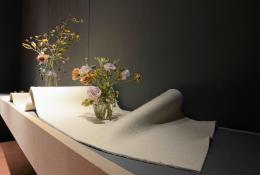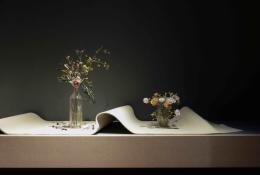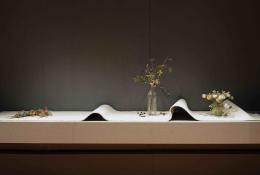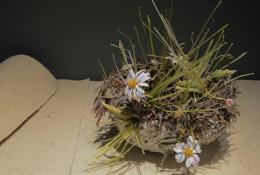ATARASSIA
Opening of the exhibition: Saturday, April 10, 2021
10 am | 7 pm
In the gallery space
Taking inspiration from the didactic poem De Rerum Natura (On the nature of things, 1st century BC) by Titus Lucretius Caro, Lilla Tabasso presents her new works created between 2019 and 2021.
“[...] Thus naught of what so seems
Perishes totally, because Nature ever
Upbuilds one aspect from different, suffering nature
To come to birth but through some different's demise.”
(Lucretius, De Rerum Natura, Book I, vv. 262-264)
In De Rerum Natura, the Latin author Lucretius is the spokesman for the epicurean doctrine, taking on the task of providing men with the tools aimed at freeing themselves from passions and sufferings that cloud earthly serenity, until the achievement of Atarassia: perfect peace of the soul.
This condition, hoped for by Lucretius, is highly evident in Lilla Tabasso's work and, consequently, constitutes the fil rouge for this first solo exhibition in the gallery.
The artist pursues the goal of Atarassia not by subtraction, avoiding the suffering inherent in the fragile and perishable human condition, but by addition: opaque and withered agapanthus, and baskets of swollen flowers, eager to show all their fragrant freshness; drooping and burnished tulips, and fleshy flowering peonies; a cascade of cherry blossoms on which an expired sparrow rests, and concrete walls from which the strength of Nature causes the delicate but stubborn stems of muscari to blossom.
Decay and splendor, autumn and spring, shadow and light, death and life, linked to each other in an infinite cycle. In perfect Mono no aware style – the Japanese aesthetic concept of the tendency to perceive a nostalgic feeling in the fleeting and passing beauty of nature and human life –, the hyper-realistic floral compositions by Lilla Tabasso highlight all the contradictions, imperfections and fears of the human being, emphasized and at the same time annihilated in the creation of positive elements of balance, designed for each single composition.
A harmonious balance is thus formed, where the achievement of Atarassia is embodied in delicate and ephemeral creations, molded into glass – the symbol of fragility par excellence.
“[...] This terror, then, this darkness of the mind,
Not dawn with its flaring spokes of light,
Nor glittering arrows of morning can disperse,
But handiest Nature’s issue and her regulation.”
(Lucretius, De Rerum Natura, Book II, Proem, vv. 59-61)
Lucretius affirms that only a careful examination of Nature, of its phenomena and manifestations, guarantees man freedom from earthly pains.
And so it is with the work of Lilla Tabasso: starting from the burning need to focus her mind and hands on a field of Nature – coming from studies conducted in biology –, the artist carries out a personal observation of the floral world, in its innumerable and changing forms.
Raised in a family of antique dealers, as soon as she finished her studies, the Milanese artist devoted herself with passion to glassmaking, despite not having any familiarity with this specific art. Irremediably attracted by the vitreous matter, she decided to devote herself to it, working first with conterie, then discovering the ancient and noble art of lampwork.
Looking at the extraordinary glass artifacts of the great Bohemian Masters of the nineteenth century, such as Leopold and Rudolf Blaschka, it took more than ten years for Tabasso to acquire her current executive capacity.
In this regard, we would like to note that during this long, intense and extremely prolific process, carried out in solitude in her Milan studio, the artist hasn’t received any help from the talented Murano glass masters: perhaps because she was too young, a woman, and not Venetian?
However, thanks to the fruitful relationship with the Venetian gallery Caterina Tognon dating back in 2017, Lilla has increasingly developed a personal creative way, showing through her works a sensitive soul and an extremely melancholic character, pessimistic but without exasperation, full of shade but still mitigated by strong flashes of brightness.
10 April | 15 May, 2021
Tuesday | Saturday
10 am | 7 pm
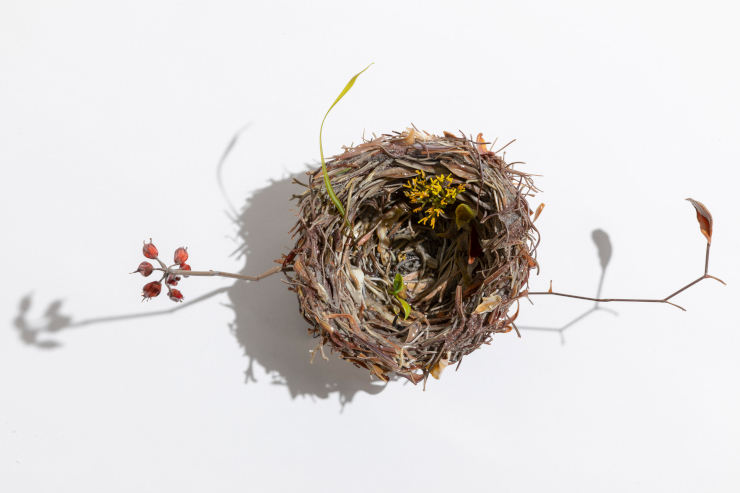
Lilla Tabasso (Milano, 1973), biologist and designer, was born in Milan where she still lives and works.
Following her studies at the Faculty of Biology at the University in Milan, she began working with Murano glass using the ancient techniques of glass-blowing and lampworking. Lampworking, in particular, is a working technique that uses colored glass rods produced in Murano furnaces, melted with a high flame and amalgamated to obtain the chosen color, then hot modeled with pliers, shears and small blow pipes.
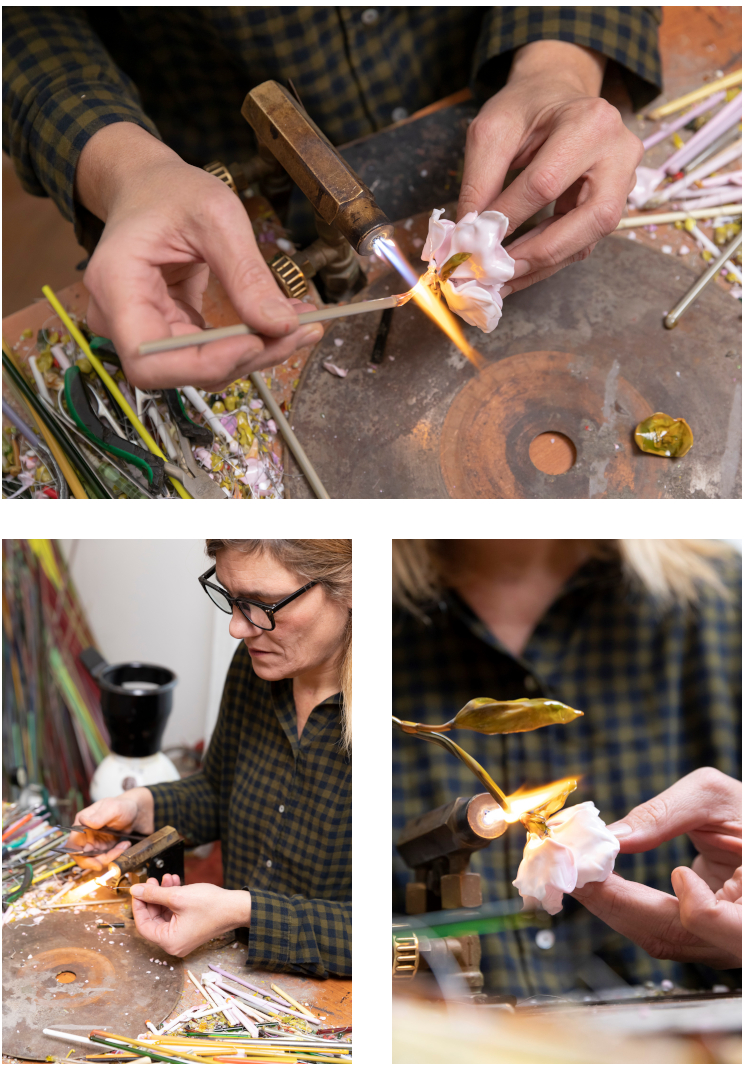
Her artistic experimentation focuses on her interest in, and feeling for nature, aided by her knowledge of botany, and combined with the complex practice of hand-made glass.
Her works are mainly flowers of incredible realism that draw from nature an infinite palette of colors, limpid shades and also – fundamental for the artist – mutations and imperfections: dry branches, faded flowers and wilting leaves. These are referred to in the concept of “Vanitas”, a symbol used in Art History for the transience of earthly life, and the inexorable passage of time.
When considering Lilla Tabasso’s work, it is impossible not to mention the work of the Blaschkas, father and son, who were glass masters from Bohemia. In the 19th Century, following a major commission from the main museums of natural sciences in America, they focused on recreating, for scientific purposes, an incredible number of species of flora and fauna. The most famous example is the Blaschka Collection in Harvard, created by Leopold and Rudolf from 1887 to 1936, and commissioned by Prof. George Lincoln Goodale, founder of the Botanical Museum. The collection contains more than 4,000 models and 847 species, all replicated to life-size.
